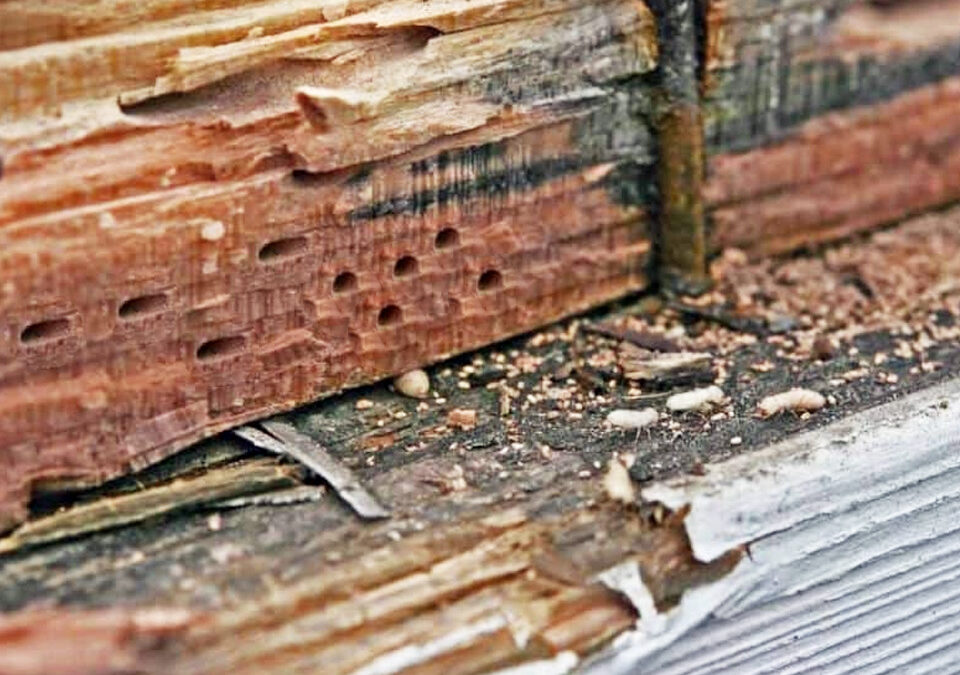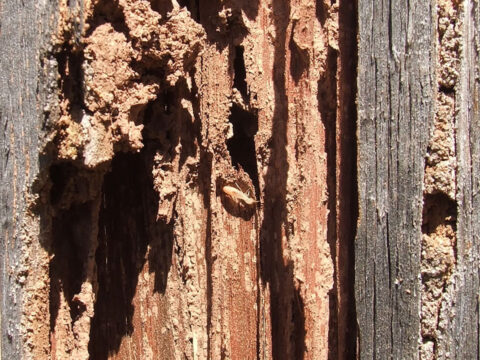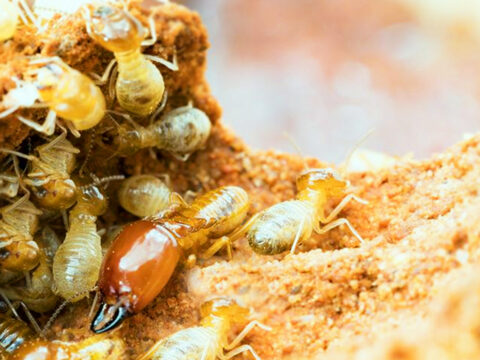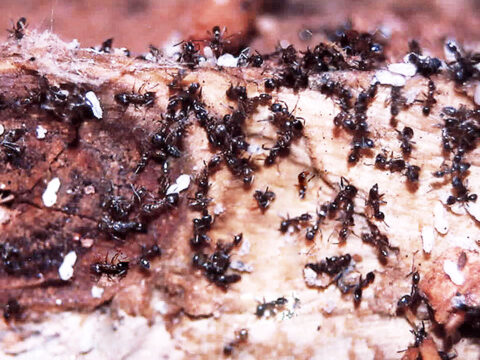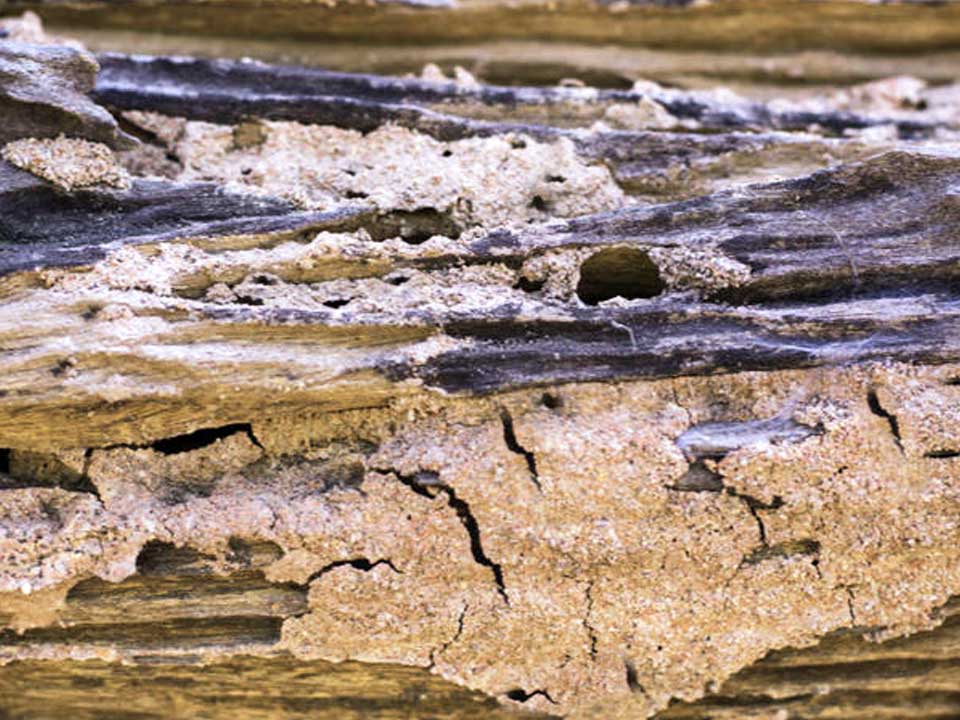
Can You Patch Termite Damage?
January 18, 2023
Wood Rot vs Termite Damage: What’s Eating Your Home?
March 23, 2023Termites are one of the most difficult pests to eradicate. Known as silent destroyers, these productive social insects tend to infest your home in huge numbers, eating away at the house structure while remaining entirely undetected until the damage is pervasive.
Plywood is a great man-made creation as it enhances the looks of any house. These days, plywood has become the primary choice for many homeowners and builders. It’s used for floors, ceilings, and sheathing. Besides, it can be used for decorative purposes in doors, cladding, shelves and furniture.
For instance, it requires a lot of time and money to produce furniture utilizing plywood. If termites attacked these furniture pieces, then it would be a huge loss of money and time.
Keep reading to find out whether or not termites can actually eat and destroy plywood.
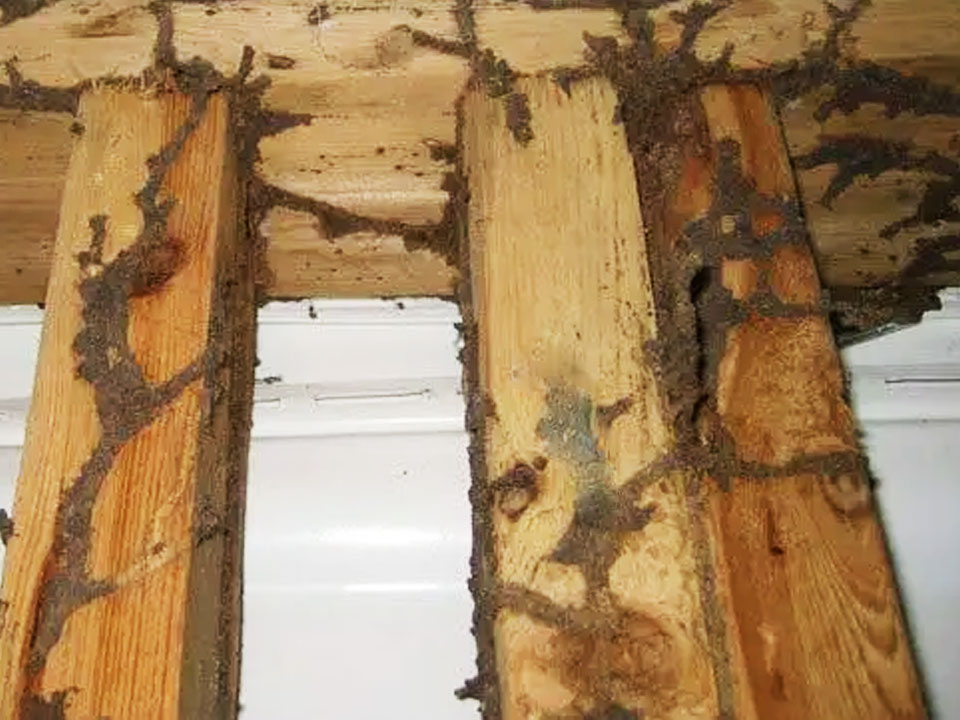
Do Termites Eat Plywood?
Termites will eat plywood, they are able to tear up all types of building materials, and plywood is no exception. They can destroy your plywood furniture or flooring. For the most part, termites will burrow into that stuff as they love everything about plywood, including the glue. The soft wood is a delicacy for them and they will eat it happily.
Therefore, if you have a history of a termite infestation in your home, or even the neighborhood, then it’s worth taking steps to prevent future infestations.
– What Is Plywood?
In short, plywood is a building material that’s been manufactured from natural wood, thus it has high durability and a long lifespan.
Plywood panels are constructed from multiple layers known as “plies” of wood veneer glued together. Typically, most plywood is made from softwood trees like pine or spruce, but hardwood plywood is also available which is made from hardwoods like oak, birch, and maple.
Marine-grade plywood, on the other hand, is a high-quality, very strong hardwood material that’s constructed with synthetic waterproof resins. It is therefore highly resistant to many of the plagues that attack regular wood, including water, moisture, termites and other borers.
– Painted And Treated Plywood
Termites will eat not only softwood, but also hardwood plywood if it’s left untreated. So plywood is usually treated to minimize vulnerability to termite attacks.
Plywood panels can be painted with acrylic-latex paints or Epoxy paints that offer great durability and are termite-proof. Such coated floors, walls, or furniture are a good option to keep these pests out of your home.
Additionally, the plywood panels can undergo a special chemical treatment. This way the chemically treated plywood can resist water, fire, and termites. For instance, Boiling Water Resistant grade plywood (BWR) is a termite-proof material treated with chemicals that help repel termites.
Therefore, if you are building a new house or furniture using plywood, it’s logical that you opt for termite-proof plywood. Today you will find many plywood brands in the market but make sure to select only high-premium quality plywood as it will guarantee protection against termites, compared to any local manufacturer who does not apply a proper termite-resistant coating.
If you prefer to make your plywood termite-resistant yourself, you’ll need to apply anti-termite chemicals. Leave the plywood to dry for minimum 6 hours and then finish it with laminate or veneer.
Keep in mind, however, that even though this treatment provides good resistance to termites, the plywood can only be termite-resistant until the anti-termite chemicals do not fade away. As soon as the chemicals evaporate, your plywood is going to be termite prone again.
– Plywood With Constant Moisture
Termites love moisture so if your plywood is not wet, chances are they won’t come around. These insects favor moist environments as they absorb the moisture they require to survive. They also eat wood that’s been in contact with the soil or is even underground, which is assumed that it’s wet.
We might as well assume that if there’s any plywood in your home that’s been kept wet or damp on a regular basis, it may be attracting termites. This could be something like an area underneath a potted plant or anything touching the wood deck panels. But also sprinklers, leaking gutters, roofs that drain directly on top of the deck, basically anything that could produce damp plywood.
So if you’re watering your plants on a porch or patio constructed out of plywood and you continue to get a certain area wet and it doesn’t dry out, or if you just keep soaking it down with water, sooner or later you may end up with a termite infestation.
In addition, make sure not to place your wooden furniture in the garden or on the lawn as it comes in direct contact with the moist ground. Instead, put your benches and tables on a tiled or concrete surface.
Also, if you live in a climate that has high moisture in the air, you’d better choose water-resistant plywood.
In an essence, you should never underestimate these pests as they are capable of eating your plywood as well. Termites can cause great damage to your property, therefore, it is important to protect it from their attacks.
Whether you want to protect yourself from the possibility of a termite infestation or are already dealing with an infestation, the best option will always be to stay in touch with a pest control professional. Termite control is crucial and our expert team at Chem Free Exterminating are here to help. If you live in Orange County, California, Call Now for more information on our termite control and removal services, and let our highly trained technicians take care of the rest.

